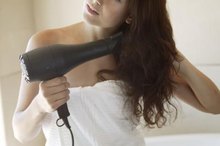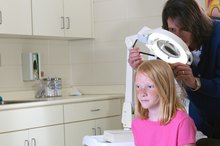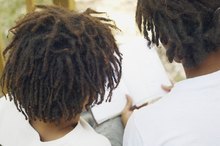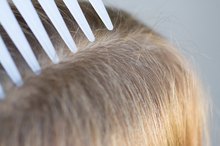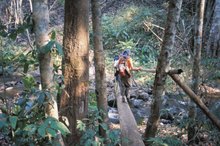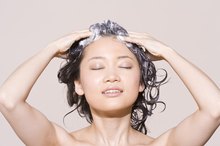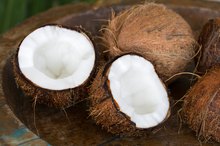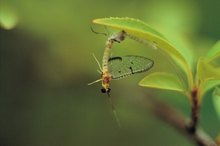Although lice and dandruff have some of the same symptoms, they are two different conditions with two different methods of treatment 1. The products used to treat the symptoms of dandruff -- including zinc pyrithione, coal tar, salicylic acid, selenium sulfide and ketoconazole -- will not remove or kill lice, which are tiny insects that take up residence in your scalp 1. Lice must be killed with over-the-counter or prescription products designed exclusively for lice removal.
Confusion
When head lice infect your hair and lay eggs, they may appear to be dandruff at first 1. However, instead of flaking off, they stay on your head. If you have what appears to be dandruff and a few weeks of using a dandruff shampoo isn't getting rid of it, see a doctor -- you may have lice, not dandruff 1.
Symptoms
What Bugs Infest the Human Hair?
Learn More
Other symptoms of a head lice infection include an intensely itchy scalp; small red bumps on your scalp, neck or shoulders; and tiny white nits -- or eggs -- at the bottom of your hair strands. If you have thick hair, a small lice infestation may be hard to spot, so any unusual scalp itching or other abnormalities should be checked out by a doctor.
Treatment
Medications approved by the U.S. Food and Drug Administration to treat head lice include permethrin and malathion. Permethrin is available in over-the-counter lotions and shampoos, while malathion is an alcohol-based solution that is rubbed onto the head. Stronger medications can be prescribed by a doctor. These products essentially act as a mild insecticide in your hair, making it difficult for the lice and their eggs to live on your scalp. You may also need to use a fine-toothed nit comb to remove the eggs from hair strands; this can help prevent the lice from coming back. To prevent spreading the infestation, wash clothing and bedding in hot water with detergent and avoid close contact with other people until the lice are gone.
- Medications approved by the U.S. Food and Drug Administration to treat head lice include permethrin and malathion.
- These products essentially act as a mild insecticide in your hair, making it difficult for the lice and their eggs to live on your scalp.
Related Articles
References
- Mayo Clinic: Dandruff
- National Institutes of Health: Dandruff
- Meister L, Ochsendorf F. Head Lice: Epidemiology, Biology, Diagnosis, and Treatment. Deutsches Ärzteblatt International. 2016;113(45):763-772. doi:10.3238/arztebl.2016.0763
- Centers for Disease Control and Prevention. Head Lice: Frequently Asked Questions (FAQs). Updated July 17, 2019.
- Devore CD, Schutze GE. Head Lice. Pediatrics. 2015;135(5). doi:10.1542/peds.2015-0746
- Barker SC, Altman PM. A Randomised, Assessor Blind, Parallel Group Comparative Efficacy Trial of Three Products for the Treatment of Head Lice in Children--Melaleuca Oil and Lavender Oil, Pyrethrins and Piperonyl Butoxide, and a "Suffocation" Product. BMC Dermatol. 2010 Aug 20;10:6. doi:10.1186/1471-5945-10-6
- Abdel-Ghaffar F, Al-Quraishy S, Al-Rasheid KA, Mehlhorn H. Efficacy of a Single Treatment of Head Lice With a Neem Seed Extract: An in Vivo and in Vitro Study on Nits and Motile Stages. Parasitol Res. Published June 11, 2011. doi:10.1007/s00436-011-2484-3
Writer Bio
Sarah Barnes has been a professional writer and editor since 2004. She has been published in newspapers and regional magazines in the Wichita, Kansas area. Barnes holds a Bachelor of Arts in journalism from a Midwestern university.
